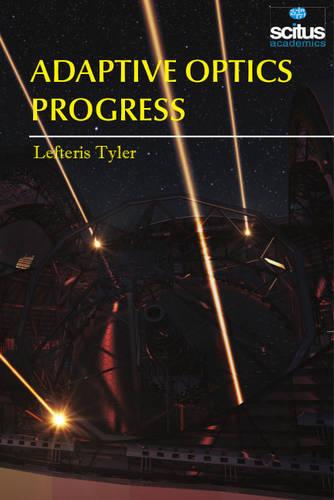Overview
Adaptive optics (AO) is a technology used to improve the performance of optical systems by reducing the e ect of wave front distortions: it aims at correcting the deformations of an incoming wave front by deforming a mirror in order to compensate for the distortion. It is used in astronomical telescopes and laser communication systems to remove the e ects of atmospheric distortion, in microscopy, optical fabrication and in retinal imaging systems to reduce optical aberrations. Adaptive optics works by measuring the distortions in a wave front and compensating for them with a device that corrects those errors such as a deformable mirror or a liquid crystal array. Although active optics can ensure that a telescope's main mirror always retains a perfect shape, the turbulence of the Earth's atmosphere distorts images obtained at even the best sites in the world for astronomy. Astronomers have turned to a method called adaptive optics. Sophisticated, deformable mirrors controlled by computers can correct in real-time for the distortion caused by the turbulence of the Earth's atmosphere, making the images obtained almost as sharp as those taken in space. Adaptive optics allows the corrected optical system to observe finer details of much fainter astronomical objects than is otherwise possible from the ground. Active and adaptive optics technology has emerged from the laboratory and is being applied to improve the performance of optical imaging and laser systems. In the last few years, development of both systems and components has accelerated. Many new concepts and devices have appeared, among which are high-performance deformable mirrors, new types of wave front sensors, and more sophisticated wave front processing algorithms. Equally important, a better understanding of the system design aspects of adaptive optics has been reached, particularly of the need for optimizing each system according to its application. Current developments in adaptive optics for ground-based astronomy include the use of IR wavelengths, partial wave front compensation using natural guide stars, and the use of laser guide stars to allow all-sky coverage with full compensation at visible wavelengths. The book entitled Adaptive Optics Progress o ers the applications of adaptive optics throughout the fields of communication as well as its original usages in astronomy and beam propagation.
Full Product Details
Author: Lefteris Tyler
Publisher: Scitus Academics LLC
Imprint: Scitus Academics LLC
Weight: 0.774kg
ISBN: 9781681172088
ISBN 10: 1681172089
Pages: 338
Publication Date: 01 April 2016
Audience:
General/trade
,
General
Format: Hardback
Publisher's Status: Active
Availability: In Print

This item will be ordered in for you from one of our suppliers. Upon receipt, we will promptly dispatch it out to you. For in store availability, please contact us.



